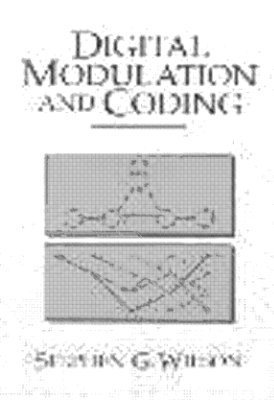Издательство Prentice-Hall, 1996, -685 pp.
Of the graduate-level texts currently available, Wilson's provides the clearest overall picture of the fundamental theoretical tradeoffs in digital communications. Rather than merely regurgitate endless formulas, Wilson sets out the foundations of probability and information theory, then rigorously derives his results. Perhaps the most appealing aspect of the text, however (and the most unusual in the mode era), is the eloquence with which it's written. Wilson's derivations never lack a heuristic explanation, and are always motivated by the inherent compromises in engineering design. In this respect the text harks back to the classic treatments of Wozencraft and Jacobs, Michelson and Levesque, and even Shannon. Finally, its treatment of error-control coding is unsurpassed (save for dedicated texts on the subject), being far more thorough and understandable than most "cookbook" recitations in other communications texts. .
This is not a "reference" book (though I have used it countless times in my work), as you will not find formulas for exotic modulation schemes, nonlinear amplifiers, adaptive equalization, or other such techicalities. It is, however, a superb instructional tool and an invaluable aid for those who wish to truly *understand* communication theory.
An Overview.
Fundamentals of Probability and information Theory.
Modulation and Detection.
Channel Coding and its Potential.
Block Coding.
Trellis Codes.
Of the graduate-level texts currently available, Wilson's provides the clearest overall picture of the fundamental theoretical tradeoffs in digital communications. Rather than merely regurgitate endless formulas, Wilson sets out the foundations of probability and information theory, then rigorously derives his results. Perhaps the most appealing aspect of the text, however (and the most unusual in the mode era), is the eloquence with which it's written. Wilson's derivations never lack a heuristic explanation, and are always motivated by the inherent compromises in engineering design. In this respect the text harks back to the classic treatments of Wozencraft and Jacobs, Michelson and Levesque, and even Shannon. Finally, its treatment of error-control coding is unsurpassed (save for dedicated texts on the subject), being far more thorough and understandable than most "cookbook" recitations in other communications texts. .
This is not a "reference" book (though I have used it countless times in my work), as you will not find formulas for exotic modulation schemes, nonlinear amplifiers, adaptive equalization, or other such techicalities. It is, however, a superb instructional tool and an invaluable aid for those who wish to truly *understand* communication theory.
An Overview.
Fundamentals of Probability and information Theory.
Modulation and Detection.
Channel Coding and its Potential.
Block Coding.
Trellis Codes.

